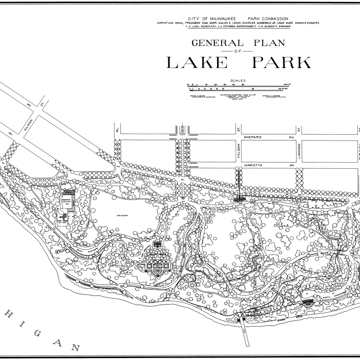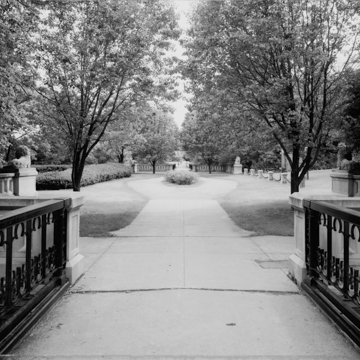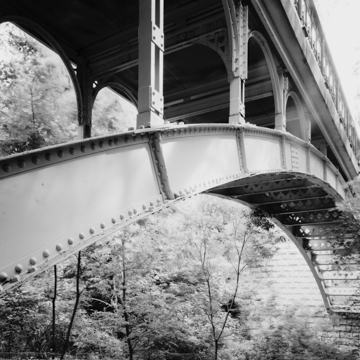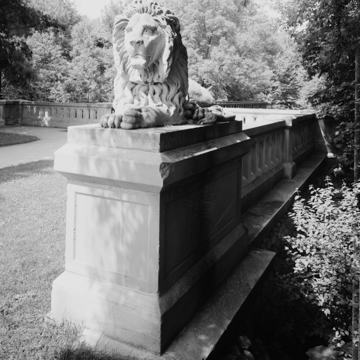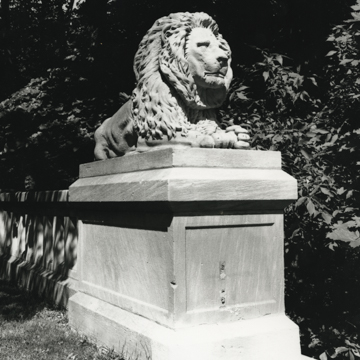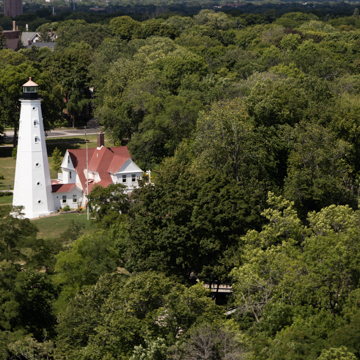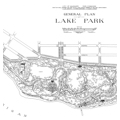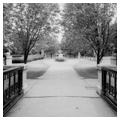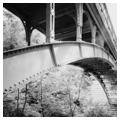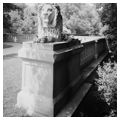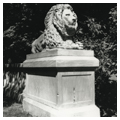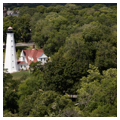Lake Park on Lake Michigan is a sylvan ensemble of dense thickets, rugged ravines, ornamental bridges, and meandering paths, designed by America’s leading landscape architect, Frederick Law Olmsted. This crafted landscape appears natural, but extensive grading, filling, and planting reconfigured the terrain and vegetation, creating this retreat on the lake’s edge. Before the 1890s, many of Milwaukee’s open public spaces were brewery-owned beer gardens, which charged admission for entertainment and refreshments. Cemeteries on the city outskirts attracted picnickers on summer weekends. The city’s few public parks were small parcels donated by wealthy citizens. In 1889, Milwaukee launched its municipal parks program and began acquiring lakefront land. The city asked Olmsted—then in Chicago planning the World’s Columbian Exposition fairgrounds—to help the parks commission design the new park.
Despite some modifications, Olmsted’s design remains remarkably intact. Olmsted believed that a landscape design should emphasize the existing setting’s best features, which in Milwaukee was a forested, hundred-foot-high lakefront bluff, cut by deep ravines. He organized the park around spectacular lake views; then he mapped winding paths, running inland and back to the lake, down the sides of some ravines and across others on bridges. Along the paths, he selectively cleared and planted trees, and filled and deepened ravines. Visitors pass through everchanging views, from dense thickets to expansive clearings that suddenly open to sweeping lake panoramas. Olmsted enhanced vistas to exaggerate the sense of distance and scale and made the park seem larger by placing darker plantings close to the path and lighter foliage in the distance.
As in his famous 1858 design for New York’s Central Park, Olmsted placed thick plantings around the park edge to shut out city sights and sounds. He made the park seem as natural as possible by planting native species of trees, preserving the forest under-brush, enhancing the streams with boulders to create pools and cascades, creating gravel paths, and building stone and log steps.
Most of the changes that have been made to Olmsted’s design reflect the American shift from passive to more active forms of recreation. After 1900, fears that Americans were becoming physically weak compelled many city dwellers to seek vigorous exercise. In Lake Park, some spaces were converted for golf, tennis, baseball, and children’s playgrounds. In the late 1920s, the city landfilled the lakeshore to extend the park from the base of the bluff. Lincoln Memorial Drive runs along the inner portion of the landfilled strip, and recreational facilities line the new lakeshore. Football and soccer fields are more recent additions. In the 1970s, automobiles were excluded from most areas to avoid interference with bikers, joggers, and walkers.
Lake Park has several attractive bridges, including a steel-arched and a brick-arched span (both 1893), and two “Lion Bridges” (1896–1897) guarded by four sandstone lions. Near the center of the park stands an H-shaped classical pavilion, dedicated in 1903. Its east and west windows originally raised to open the building to the outside. The pavilion, now a restaurant, hosted concerts and housed a kitchen and refreshment stand. In 1908, Alfred Clas added the formal Grand Stairway leading from the pavilion to the lakeshore promenade.
The North Point Lighthouse, at the park’s southern end, predates the park. Made of cast-iron plates in 1855, it was moved a hundred feet inland to its present location in 1879, when erosion of the bluff threatened to topple it. The keeper’s residence also dates from 1879. Another modification came in 1912. When growth of surrounding trees began to obscure the light, the lighthouse was raised atop a thirty-six-foot-high steel-plate addition.
One other landscape feature predates the park by many more years. The Lake Park Mound, likely from the Middle Woodland culture (300 BCE to 400 CE), is the last prehistoric mound known to survive in Milwaukee. Located east of Lake Drive between Newberry and Locust streets, the two-foot high conical mound is forty feet in diameter. Other mounds surrounding it were destroyed when the park was developed. The mound’s original function is unknown, but it was probably a ceremonial site for Native Americans living in the area.













